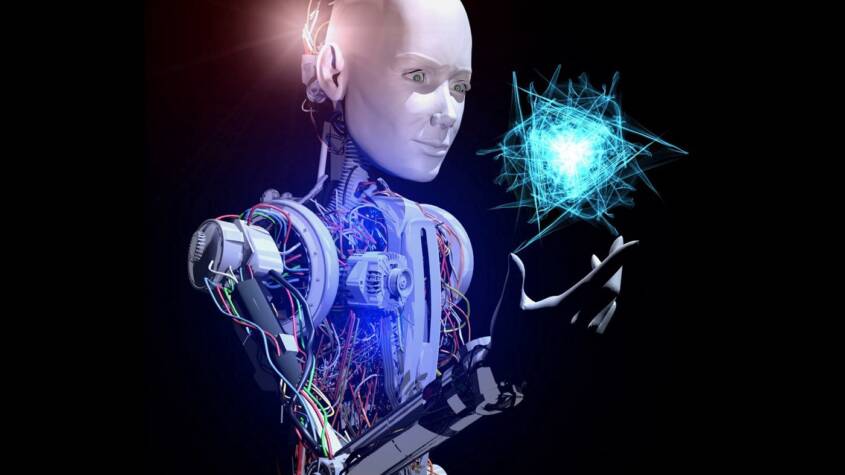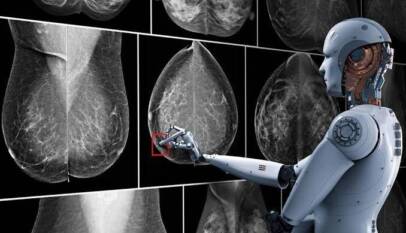Artificial Intelligence of the Future: Quantum Artificial Intelligence
Artificial intelligence is unquestionably one of the most essential technologies of the future, as it is inspired by the biological functioning of human intelligence and used to provide solutions to issues in nearly every area. Many of the technical equipment we use on a daily basis are now referred to as smart devices, and the term “mind” refers to artificial intelligence. Artificial intelligence is a technology that solves complicated issues in a fraction of the time it takes human intellect to solve them and reduces the margin of error in human intelligence-based solutions. Is there a second world? Are Machines Capable of Thinking? , which was proposed during World War II by British mathematician Alan Turing. the foundation of artificial intelligence, a term we hear a lot these days. Algorithms at the heart of artificial intelligence today run on standard computers. As a result, the artificial intelligences’ thinking capabilities are comparable to the computing capability of today’s computers.
We already know that traditional computers have significantly greater computing capability than humans, but are they as quick at tackling complicated problems? In some circumstances, traditional computers’ speed makes it difficult to address problems. The concept of quantum computing, which we’ve only just heard about, was introduced to tackle difficulties with modern computers where computational capacity was insufficient and it began to transcend the limits of traditional computing. The foundation of quantum computing is quantum theory, which we typically learn about in physics classes.
What is this quantum theory, exactly? In its most basic form, it’s a theory that describes how subatomic particles behave and how they can exist in multiple places at once until they’re observed. Quantum computing, which is based on this theory, will eventually supplant today’s computers. Many businesses have already invested millions of dollars in this change. Quantum computers are identical to current computers, and they have enormous computing capability due to their ability to store more than zeros. Quantum-based artificial intelligence and algorithms have emerged as a result of this massive increase in computer capacity. The quantum algorithm has also been brought forward by quantum artificial intelligence. An algorithm that can be performed on quantum computing platforms is known as a quantum algorithm. Current algorithms are compatible with conventional computers, which are the computers that we use today. Quantum algorithms, on the other hand, necessitate computer hardware that is significantly more powerful than conventional computers.
It’s not hard to guess that computing power is the most important feature that distinguishes traditional artificial intelligence from quantum artificial intelligence, but where does this computing power come into play, and how do we see the enormous power of quantum computing in artificial intelligence neurons? Let’s take a look. As I previously stated in my articles, the foundation of artificial intelligence is a neural network known as artificial neural networks. Whether classical or quantum, the basic function of a neural network is to recognize patterns. The system looks like a grid of fundamental processing units and is inspired by the human brain. I’m referring to neurons. They can be basic, such as gadgets that switch on and off. When a neuron detects a sufficient number of neurons and observes the output of a big number of neurons, it gets activated, similar to when it votes. Neurons are normally grouped in layers. While the primary layer absorbs the input (for example, image pixels), the middle layers combine the input in various ways (represent structures such as corners and geometric shapes). The output is created on the final layer (a high level of definition of the image content). An artificial intelligence model must find the optimum coefficients that must be employed in this neural network, which is usually end-to-end, in order to execute the learning process. These coefficients are obtained during the artificial intelligence training phase, and at some point, our AI model performs the calculation / decision-making procedure as instructed (such as distinguishing which picture is cat and which picture is dog). All of these internal links are represented by a collection of figure matrices on a traditional computer. It’s like doing matrix algebra when you’re running this network. These matrix operations are typically routed to a dedicated chip, such as a display processing unit.

Quantum computers can take advantage of the quantum system’s exponential nature. The bulk of quantum systems’ information storage capacity is due to the qualities that these qubits display in combination, not to individual data units (cubits). Both inactive, both inactive, inactive/inactive, and inactive/inactive are the four common functionalities of two qubits. Each one has a unique weight, or amplitude, which can be used to represent a neuron. When a third qubit is added, it can represent eight neurons; when a fourth qubit is added, it can represent sixteen neurons. In folding, the machine’s capacity continues to grow. The neurons will spread throughout the system. You process the number 16 in one stroke when processing a four-qubit state. A traditional computer, on the other hand, must deal with these figures one by one. Although some companies are already doing so, as can be seen from the computational speed of artificial neural networks, the expansion of quantum computers and the complete quantum revolution in computing will pave the way for traditional artificial intelligence to be replaced by quantum artificial intelligence in the future.
Artificial Intelligence Based Voice Health Assistant: Albert Health
Chronic patients can live a simpler everyday life thanks to the Albert Health application,…













